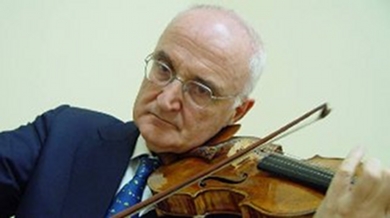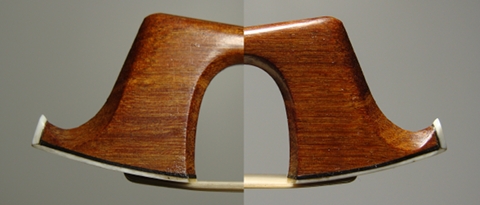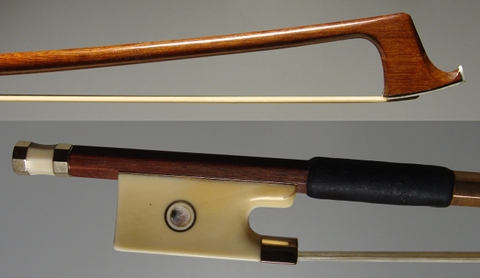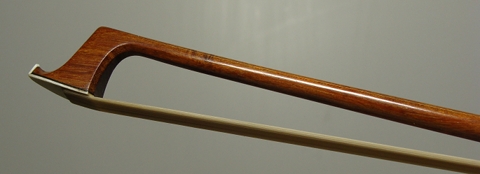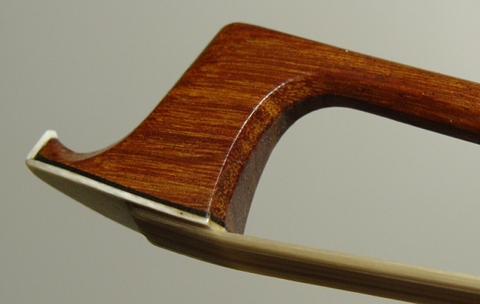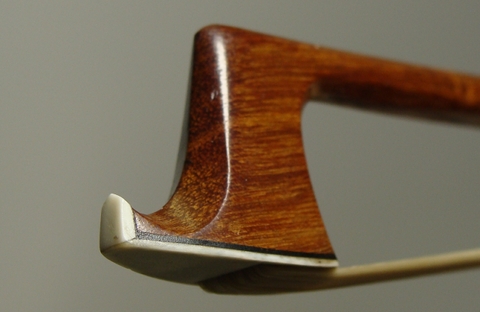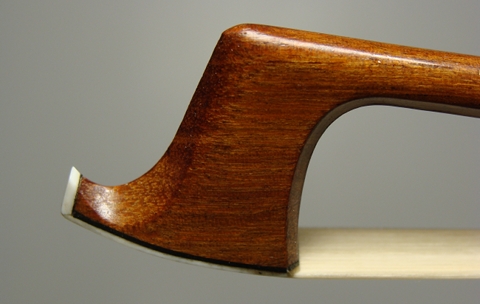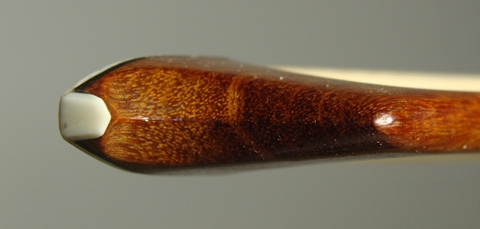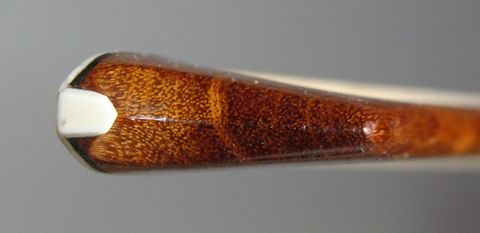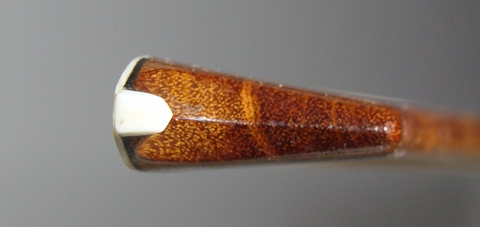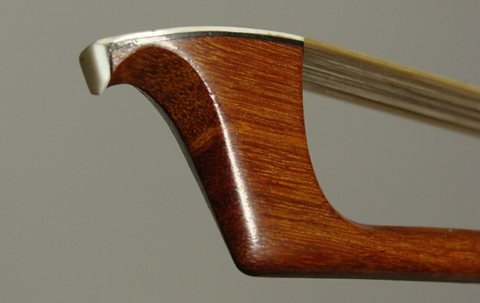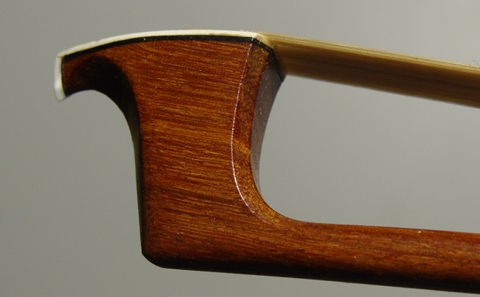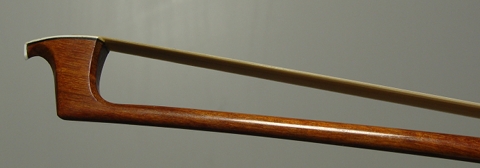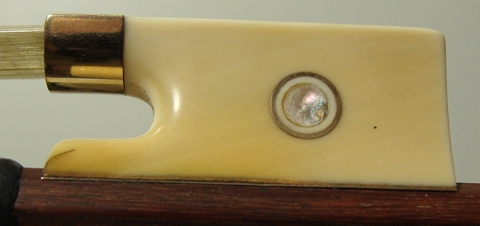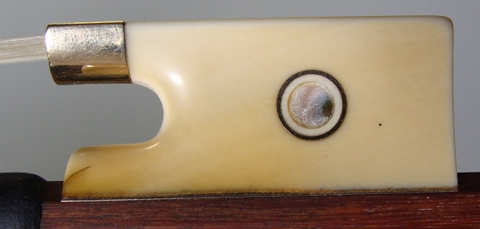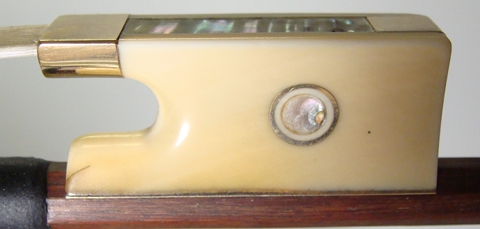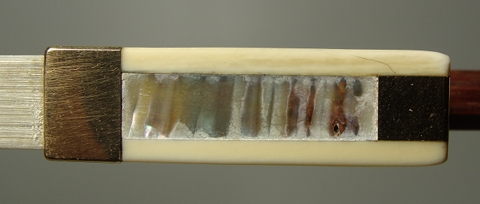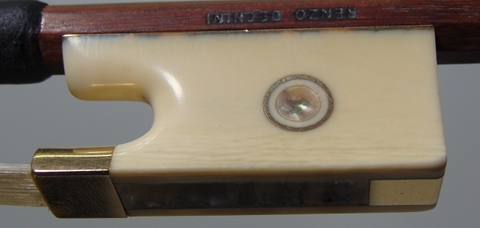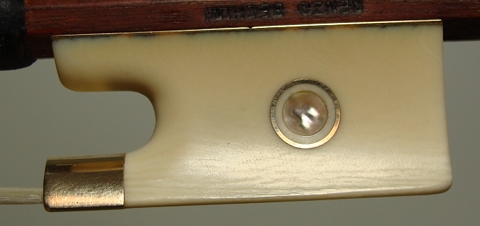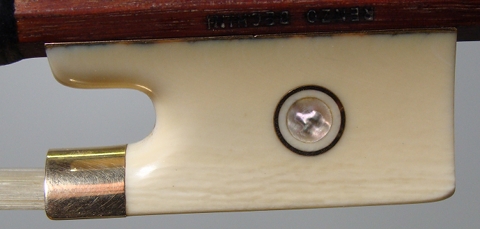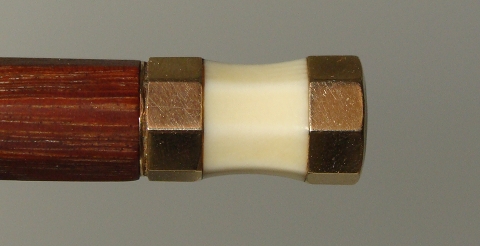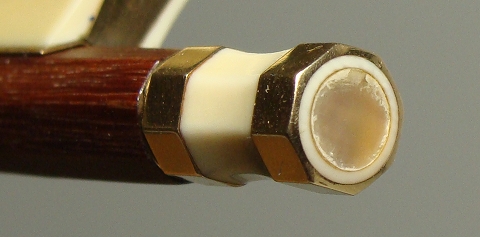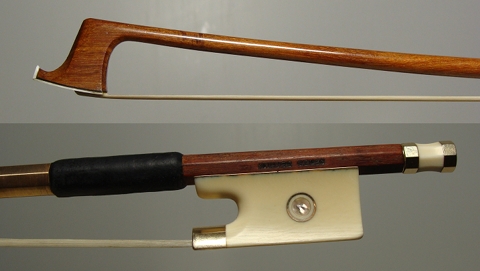RENZO BECHINI; THE REAL FAUSSONEDid you ever think about someone who exists no more: "What a pity, it would have been nice to have known him ." Well, I would have liked to know M° Renzo Bechini; a genial character and my fellow countryman, of whom I have the honor to show you some works.But before speaking about Him, a pleasant news.
Maestro Salvatore Accardo Even if I had not written it under the photo, I think you would have recognized in any case the violinist here depicted. However, what you ignore is that M° Navea Vera and I have had the honor to add M° Salvatore Accardo to our customers list. I must say that it was not easy to find something that would match both him and his beautiful instruments, so that that when he said "yes", I had to ask it a second time. But at the end, my colleague did build the right one, and the beautiful bow you see in the picture has become part of the Master's equipment, in very good company I'd say! Violin bow D.T. Navea Vera in ebony and silver And now let's speak about Bechini .
Of course I knew Maestro Bechini's bows, but I ignored completely that behind them there was such a character. The more I read his biography, written by himself at the age of eighty, in a very pleasant Italian, that I suggest you to read on his site the more I realized that I was in front of a real Faussone in flesh and blood. He too, like the character of "The Wrench" by Primo Levi, traveled the world with exactly the same dedication to work, with which Faussone mounted bridges, even if for Him they were looms for socks spinning. I think that the sentence that Faussone tells in the book suits completely his vision of life: He did everything in his life He was a blacksmith at his father's shop when he was a child, dental technician, musician (he was graduated in viola), mechanic, jewellery dealer, jazz bassist, and of course , at first a luthier and then a bowmaker. The passion for bows and instruments was born, as in many cases at the time, by necessity. Wishing to study the violin professionally, and not coming from a wealthy family who could afford such an important expense , he decided to build one for him. The first attempts, obviously, gave mixed results, but he did not loose heart, and throughout years and experience, things improved a lot. In 1971, the year of his retirement (because obviously he was a luthier in his spare time left him by his job) he won the biennial in Cremona with a cello, after which he decided to devote himself entirely to bows. The bows
Analyzing Bechini's work, we must obviously take into account the total lack of school he had. This deficiency, on one hand must have made his life very difficult, as it had to try everything on his own skin, but on the other, it gave him a virtually unlimited autonomy of action.
If he were French, and had brought such a head to his teacher, this latter probably would have pulled back the guillotine and washed the affront with blood. Mr. Bechini however, was not French, but Italian and retired, so he could disregard market, school and customers; we perceive that he did what he liked .
The head is not a classic model indeed, this particular style has been adopted only by a craftsman; Panormo, a native Italian who worked in London. Also from this appears that little of genuine and good natured patriotism he had, if I have to copy, I copy from an Italian.
The most surprising thing about Bechini is undoubtedly the curve, very, very close to that of the French bows of the first period, and here comes out the technician special skill. While students of bow making schools, strictly follow what their teachers tell them without wondering whether it is right or wrong, one like Him, who had no teachers, had to find the solution with intellect and scientific method . Mr. Bechini was a precision engineer, indeed a very good one Just to give you an idea of his level, in 1956 he had a monthly salary of 200,000 Lire , 10,000 euros in the present day. Like a good mechanic, he realized that the bow is a leaf spring, and then he did not follow a blind teaching but he engineered the spring so that it worked at the best. Believe me, He knew more about curves, than Morizot, Bazin and company.
The frog is not stylistically flawless, the throat doesn't enter that much and it remains a bit too closed, not giving breath to the shape but it is very well carried out , worthy of the best French.
The button is pretty nice and original. In three parts, with a carved ivory core and a rounded support.
So long Paolo
|
   |






